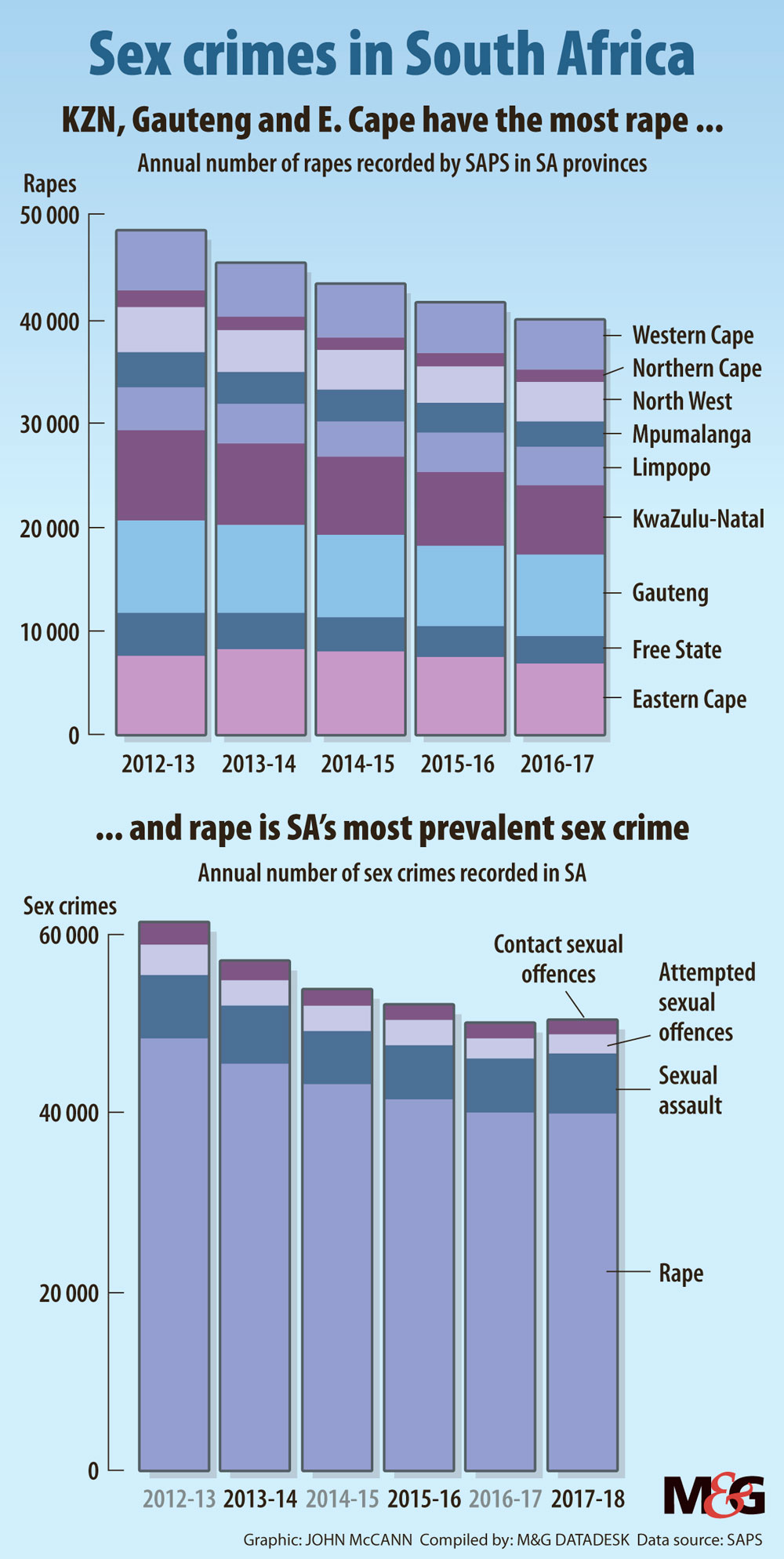(John McCann/M&G)
Policymakers require solid statistics if they are to correctly respond to the daily violence women experience. But, we don’t have many.
The data from state organisations such as Statistics South Africa and the South African Police Service (SAPS) don’t give a nuanced picture of violence.
Lisa Vetten, of the Wits Institute for Social and Economic Research, says: “We don’t use [the data] for information purposes and to find patterns and trends within homicide. We use them to scare ourselves.”
In an article published in May on the website AfricaCheck, she pointed out that there are opposing narratives regarding violence against women.
One is the view that South Africa has the highest rape numbers in the world, painting “a picture of a country at war with its women”, she wrote.
On the other hand, annual SAPS crime statistics show a steady decline in reported rape cases — implying that sexual violence is being brought under control.
Without comprehensive data to inform useful analysis, South Africans are at risk of misdiagnosing the real issues.
“You have to put [data] into context. For every one woman getting murdered, six men are dying. We need to look at the broader context of violence in this country.”
“What we do is continue to normalise violent relations of men — and that is part of the problem,” Vetten said.
